Eager to elevate your hunting skills in Montana’s stunning landscapes? Look no further! With some of the West’s longest hunting seasons, Montana is a hunter’s paradise, boasting healthy game herds and vast expanses of public and private lands for exploration.
Embark on an exceptional hunting journey with our exclusive guide, providing essential pre-trip research and planning tips. From acquiring Hunter Education certification to deciphering Montana’s hunting licenses, we’ll guide you through every step of your memorable Montana hunting trip.
Discover how to pick your desired game, select the right hunting area, and ensure you have the necessary equipment. For those seeking a professional touch, we’ll guide you to local outfitters providing experienced guides, amenities like hot showers, and hassle-free hunting services.
Post-hunt, we won’t leave you stranded either. We’ve got you covered with the most crucial activities after your amazing hunting trip: field dressing, game check-in, gear cleaning, and the all-important celebration to wrap up the journey.
- Related article: Montana Best Things to Do
So step right in, fellow hunters! Whether it’s your first time or your hundredth, this handcrafted guide is your ticket to the ultimate Montana hunting adventure. Buckle up and read on — your exhilarating hunting escapade in Montana awaits.
7 Key Takeaways on Montana Hunting Guide
- Brush up on the state’s rules by acquiring and perusing the updated hunting rules and information from Montana Fish, Wildlife & Parks.
- Be physically prepared to navigate Montana’s vast and rugged terrain.
- Layer your clothing and understand first-aid measures to prevent frostbite and hypothermia in colder months.
- Whether you’re new to hunting or a seasoned pro, consider a guided hunt, regularly practice shooting, and familiarize yourself with your chosen hunting method.
- Your hunting essentials should include your license, map, GPS, first-aid kit, food, water, ammunition, and communication tools.
- Select the species that best suits your hunting style and the environment, and explore legally accessible hunting areas.
- Local outfitters offer the convenience of experienced guides, making your hunting experience safe and enjoyable, even in the toughest terrains.
How to Prepare for Your Montana Hunting Trip

When you’ve got Montana in your sights, it’s not just the state’s jaw-dropping landscapes that you’re after, it’s the unmatched hunting experience. So, let’s gear you up for success. A successful Montana hunt is a concoction of preparedness, respect for nature, and skill, which I’ll guide you through in this section.
1. Research and Plan

Embarking on a hunting adventure in Montana, similar to spelunking a cave or surfing in Hawaii, requires a bit of prep work. It’s not just about getting your camo gear and calling it a day. You’ve got to consider hunting seasons, regulations, and even quotas.
If you were popped into this world after January 1, 1985, you’ll need your Hunter Education certification in hand. Additionally, there are generally two types of licenses to be aware of:
- General licenses can be bought over the counter. These are your standard “entry-level hunter” licenses.
- Special limited permits and licenses are like getting into an exclusive club – there’s a bit more legwork involved. They’re available through drawings and vary depending on what, where, and when you want to hunt.
Montana’s got an impressive lineup of seasons, from archery to waterfowl, turkey, and bear. Understanding these timelines could be the difference between a fruitful expedition and a confiscation scenario.
Montana’s Hunting Seasons:
- Archery Season – 6 weeks
- General Big Game Season – 5 weeks
- Waterfowl Season – 101 days
- Turkey and Bear Seasons – Spring and Fall
- Wolf Season – 6 months
- Upland Game Bird Season – Liberal
So, where do you start once you’ve wrapped your head around these rules? “I’d say education is your first hunt,” suggests local hunting pro, Hank. “Montana Fish, Wildlife & Parks is your go-to resource for season dates, permit deadlines and regulations. I can’t stress enough; read the fine print. You don’t want to be that person with an overdrawn elk permit.”
The bottom line: Preparation is key. Take the time to research and plan your hunting trip. It’s like mapping out your quirky Instagram photo stops for your #MontanaAdventure.
2. Choose Which Species You Want to Hunt

Montana, also dubbed the ‘Last Best Place,’ is a playground for hunting enthusiasts. With an almost ritualistic significance, this state doesn’t just offer a weekend hunting opportunity; it opens the door to experiences you’ll savor for a lifetime. But first things first: choose your game.
In Montana, you’ll find a colorful ensemble of creatures you can ethically pursue, from majestic white-tailed deer the and stealthy elk to the elusive mountain lion. Endeavor to select the one that best suits your hunting style and the environment you find most appealing.
Think about it, would you be happier stalking a turkey in the rolling prairies or seeing a bighorn sheep on mountain ledges? The main Montana animal species you can go after during the state’s many seasons include:
- White-tailed Deer
- Rocky Mountain Elk
- Ducks, Geese, and Swans
- Game Birds
- Furbearers like Coyotes and Bobcats
- Specialty Species like Bison and Wolves
- Migratory Birds
- Mountain Goat
- Antelope
Based on expert advice from local hunters, it’s not just about choosing the species, but the kind of landscapes you dream of spending your days in. If you’re a mountain person, elk and mule deer may be right up your alley. Conversely, if the open prairie or grassland calls out to you, you might find thrill in hunting Montana’s antelopes.
A resident and seasoned hunter advises, “Hunting isn’t just about the kill – it’s about immersing yourself in an environment and feeling at home while you’re waiting for your game to walk into your sights. Choose a species that’ll lead you to beautiful surrounding nature you’ll enjoy, even if the critters play hard to get.”
Let’s be clear, you can’t expect to bag your favorite species on your first trip. Hunting in Montana often requires several days. The right approach is to prepare for the long haul by helping yourself to unforgettable experiences, whether you’re basking in the sunlit plains or wandering the misty forests.
3. Select the Right Hunting Area
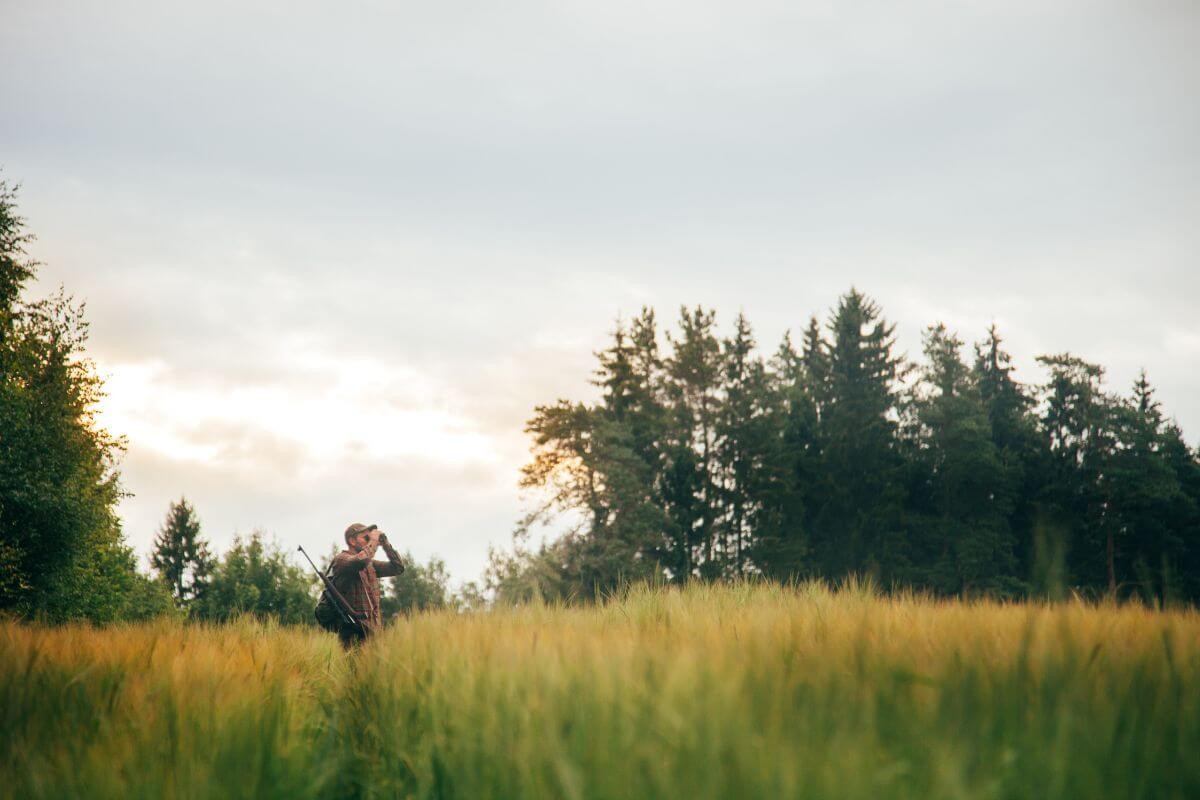
Montana is a vast playground for hunters, but it’s not as simple as picking a random spot on the map and unloading your gear. In the grand scheme of things, it’s about selecting the right hunting area, and having legally accessible lands, public or private, makes all the difference.
Montana’s Division Into Regions and Hunting Districts:
- 147,164 square miles (38,1153 square km) are divided into 7 regions, further subdivided into hunting districts.
- Each region corresponds to a number (e.g., Region 1 hunting districts start with 1 or 001).
- Knowing these regions and districts streamlines your search for the perfect hunting spot.
Navigating through Public and Private Lands:
- Legal access to state lands is usually possible through public roads, navigable rivers, or adjacent federal lands.
- Legally accessible hunting grounds vary based on the managing agency and land attributes.
- Montana Wildlife Management Areas (WMAs) are under Montana Fish, Wildlife & Parks and offer widespread hunting opportunities, but have season limitations.
- Ask for permission before crossing private lands to reach state or federal lands.
- Be aware that hunting in wildlife refuges is often restricted or even prohibited, so it’s best to steer clear of those areas.
It takes a bit of landscape literacy to pick a spot that’s both legally accessible and stuffed with game. So do your homework, and use your knowledge of different regions and their hunting districts to identify promising spots.
Not every location is a gold mine and different areas may require different approaches. Understanding these intricacies will not only save you time and legal headaches but could also be the difference between bagging a trophy or a bag of frustration. Go forth, and have the hunt of a lifetime!
4. Prepare Hunting Gear and Equipment
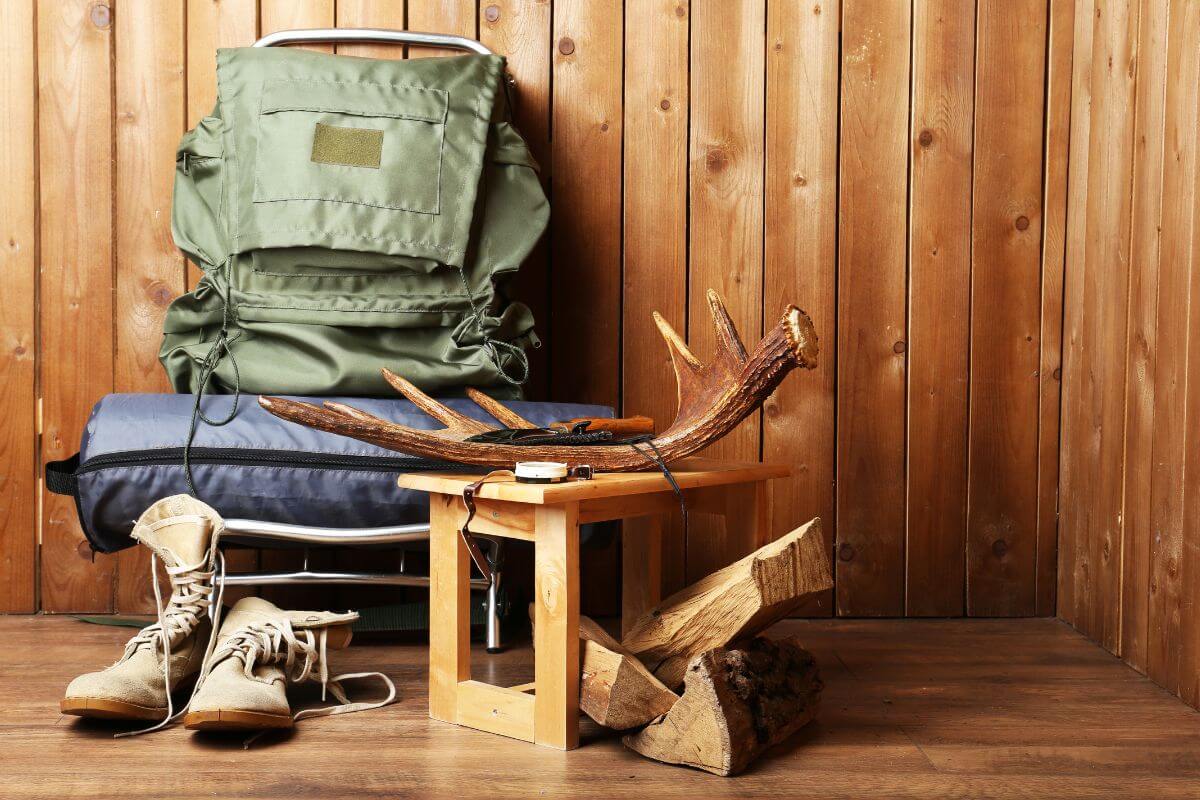
The first step to preparing for your Montana hunting adventure is deciding how you want to hunt – whether it’s the classic allure of archery or the more conventional general weapon approach. As you’d expect, Montana has distinct seasons for archery and rifle (and associated methods) to ensure wildlife conservation.
In the vast expanse of Montana’s wilderness, your method of hunting is a personal choice, but it must match with established seasons and your game of choice. For the big game in the West – elk, antelope, deer, and bear – you’re primarily looking at rifles, muzzleloaders, or handheld bows.
A quick primer on hunting weapons for hunters-to-be:
- Rifle – The trusty classic, perfect for long-range shooting.
- Muzzleloader – A historical touch and great for channeling your inner mountain man, though less accurate at a distance.
- Handheld Bow – Whether it’s a traditional bow or a modern compound bow, this adds a thrill to your hunting experience.
Be sure to check your selected method’s specific season – for example, Montana’s muzzleloader season is often earlier than rifle season.
Aside from a set of up-to-date maps, here are must-have items for your hunting gear bag:
- Blaze Orange – “Fashionable” and safety-conscious, blaze orange clothing makes you visible to other hunters and reduces the risk of accidental shooting.
- Boots – Those trailblazers are made for walking, and that’s just what they’ll do! Sturdy waterproof boots are essential for longer hikes and uncomfortable weather conditions.
- Binoculars – To scope out your prey from a safe distance.
- Hunting Knife – A trusty tool for cleaning and dressing your kill.
- Backpack – It’s a mobile treasure trove holding everything you need.
- First-Aid Kit – Accidents happen; be prepared.
- Game Bag – To carry back your hard-earned bounty.
- Personal Locator Beacon – In case, heaven forbid, you get lost.
It’s all about planning. Preparing a tried-and-tested gear list ensures that you’re well-equipped for days of hunting in Montana’s expansive grounds. From up-to-date maps to first-aid kits and everything in between, this checklist is your roadmap to a fruitful and safe hunting mission.
5. Opt for Local Outfitters
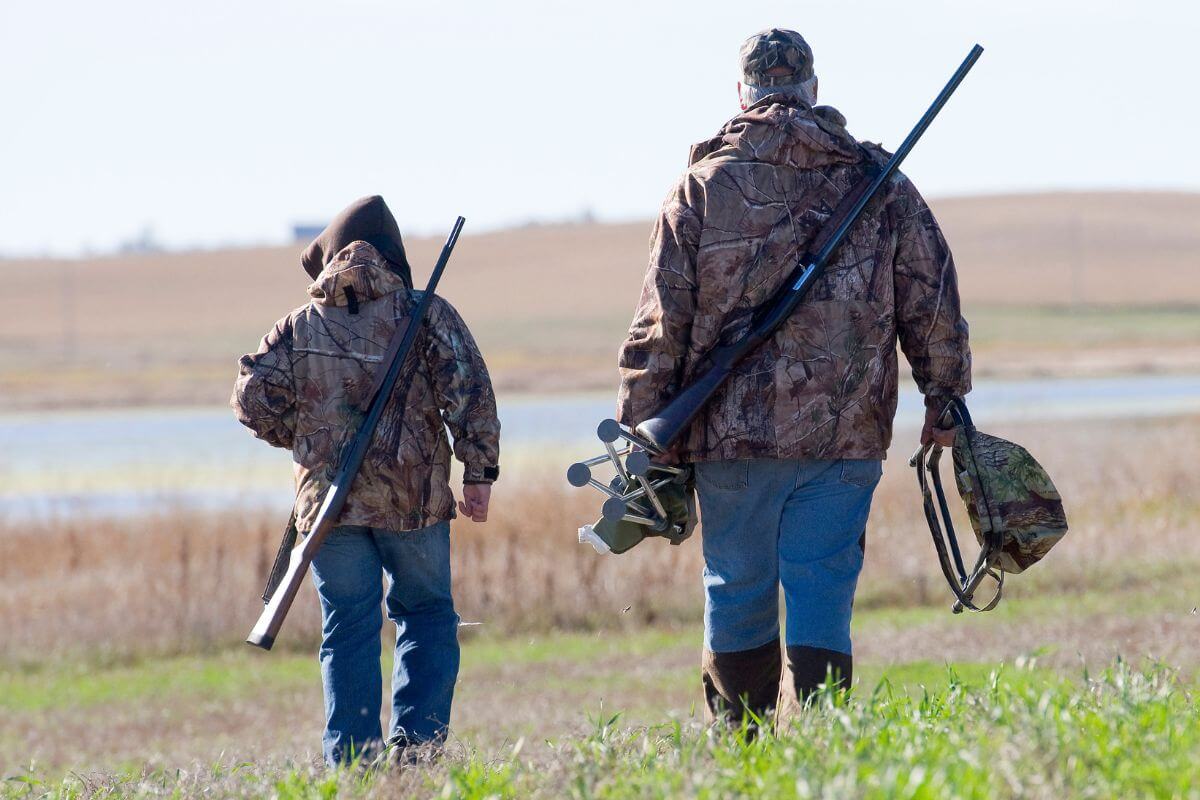
If your Wild West fantasy doesn’t include you wrestling with tent poles, scouting water sources, or waking up early, local outfitters are your overnight campfire legend. You’re still the hero, but with laudable sidekicks who happen to be professional guides specializing in taking the sting (and stench) out of backcountry life.
Top Hunting Outfitters in Montana:
- Montana Big Game Outfitters – Quality over quantity and managed hunt areas for archery and rifle hunters. High hunting success rates.
- Swan Mountain Outfitters – Located in high-octane environs such as Glacier National Park and Bob Marshall Wilderness. Various camp options are available.
- J&J Guide Service – Offers hunting areas from diverse landowners, ranchers, and farmers for that supreme Montana experience. Focuses on big-game animals such as elk and deer.
And if none of this fits your style, you can visit Montana Outfitters and Guides Association. This stellar association is your gateway to the professional hunter’s lifestyle. Search Map-Based, Species-Specific: Specify where, what, and when, and your ideal match will come galloping in.
I’ve personally seen the homey camps set up by Montana Big Game Outfitters, where even rookie interpreters can enjoy nature with the safety net of experienced staff. Similarly, J&J Guide Service’s emphasis on partnering with local landowners not only enriches the hunting experience but also sustains rural economies. And let’s not overlook Swan Mountain Outfitters, who believe that memorable hunts can happen in the toughest terrains.
These outfitters cater to patrons who want the camaraderie of the chase without compromising on a hot shower (yes, it’s possible). You’ll still be living off the grid but with the convenience of an off-grid microwave or two. Being in the wild is a little like being in love – it’s better not to do it alone.
Montana Hunting Trip Tips
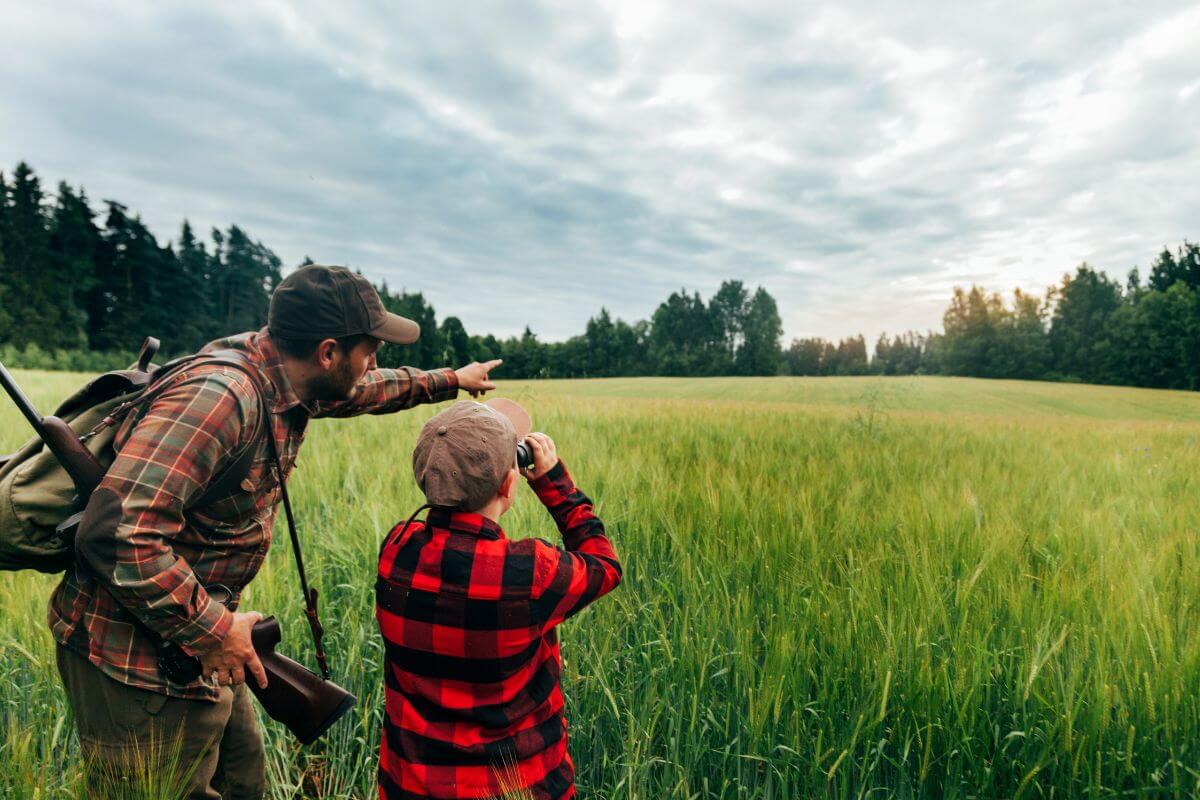
Whether you’re a seasoned pro or a newbie in the hunting safari of Montana, keep your vital basics at the forefront before you hit the Big Sky Country. Here are a few field-tested hunting tips that might just be the secret sauce to add extra thrill and unforgettable memories to your Montana hunts.
1. Hunting Techniques
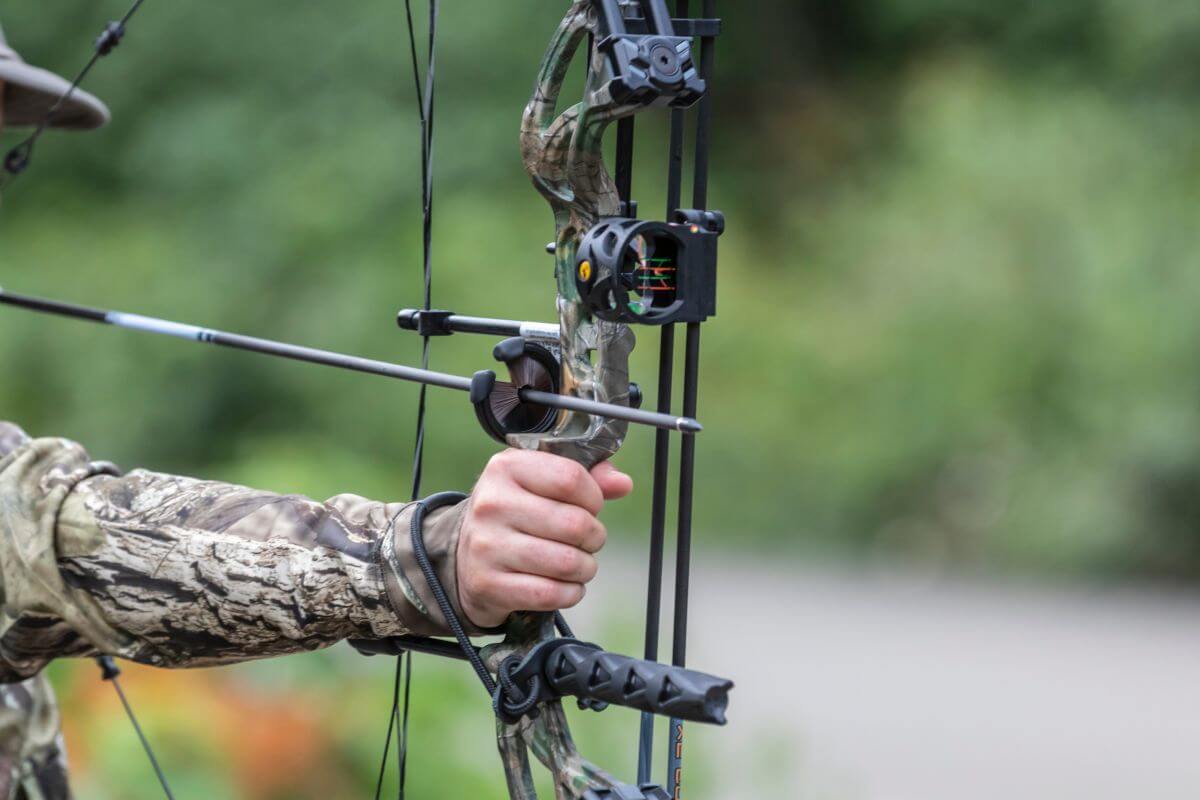
One thing you can bet your bottom dollar on – a successful hunt doesn’t come easy. Whether you’re sniffing out the best spots on public land or you’ve got a sweet deal on private grounds, success begins with footwork. Scouting an area and chatting up the locals – that’s your recipe for snagging that trophy buck or bull elk.
Now let’s talk strategy. When it comes to your choice of weapon, it’s important to remember that with a bow and arrow, you’re going to have to channel your inner ninja and get way closer to your prey. This might involve some slow, tense moments navigating through dense timber.
On the flip side, if you’re rocking a rifle, your best bet might involve biding your time near an open meadow. You’ll need a clean shot line, and you can afford to be less sneaky and more patient.
Jeremy, a seasoned hunter I spoke to, swears by these little powerhouses – a good pair of binoculars. “Think of them as the secret ingredient to a productive hunt. The better you can see, the more successful your hunt.”
Noise is another critical factor. The less you make, the better. It’s why techniques like Still Hunting, where you move quietly through an area, and Stalking, where you follow a fresh trail or get as close as possible to the game, are staple skills you need to master.
Now, let’s talk about Posting — think of it as the hunting equivalent of a surprise party. Used extensively in dove hunting, this technique involves setting up at a spot where you are likely to see game, remaining still for extended periods. I’m told it’s about playing the patience game but highly effective, particularly along flight paths or areas where game is likely to approach.
So, as you’re gearing up and building your hunting quiver, keep these tips in mind. The choice between being a bow-and-arrow whisperer and a rifle stoic is yours, my friend. But remember, no technique can replace the timeless ways of nature – it’s always best to bend your hunting style to the dictates of the wild.
2. Hunting Etiquette
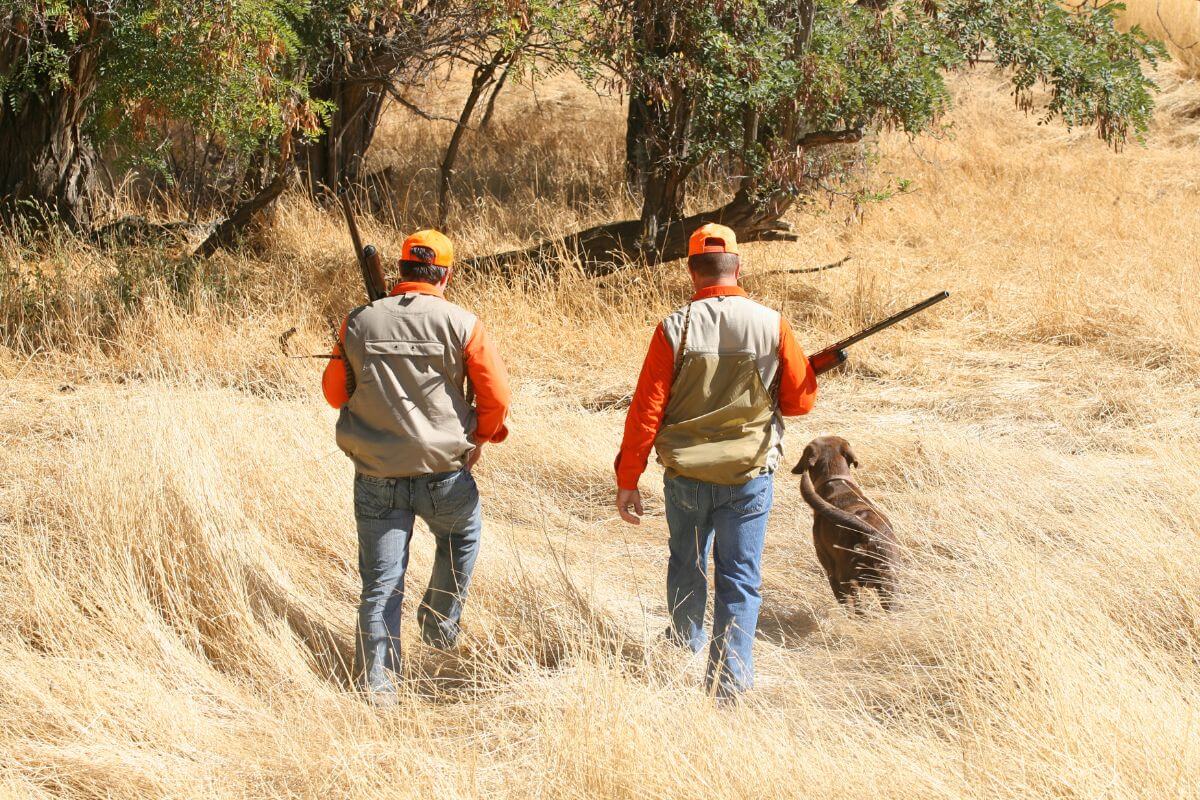
Before you don your camouflage and load up your gear, consider this your friendly PSA: knowing the ins and outs of land access is just as important as having the right hunting permit.
So, where do you start? First things first, you’ve got to do your homework. Whether it’s private ranches or public lands, knowing who the land belongs to and any specific use guidelines is vital. And here’s the kicker – regardless of whether a property is posted or not, Montana’s state law mandates that you secure permission from the landowner, lessee, or their representative.
Quick Tips for Proper Land Usage When Hunting:
- Get Permission – Reach out to the owner before the season kicks off. It’s like extending an invite to someone else’s party — a simple acknowledgment of respect. Detail how many of you will be hunting, the species you’re targeting, and how long you plan to stay.
- Respect the Property – Treat it as you would your own home – which, of course, means leaving it as you found it. No one wants to stumble upon a ran-sacked field or a broken gate.
- Express Gratitude – A little goes a long way. Nothing secures future access quite like expressing gratitude for the land you’re allowed to hunt on. Sincere thank-you notes or even a small, thoughtful gift can make the difference between a welcome return and a “no trespassing” sign next time.
Access is a two-way street. When landowners feel that their properties are being respected, the potential for a warm reception, increased access, and awesome hospitality rises.
3. Other Tips
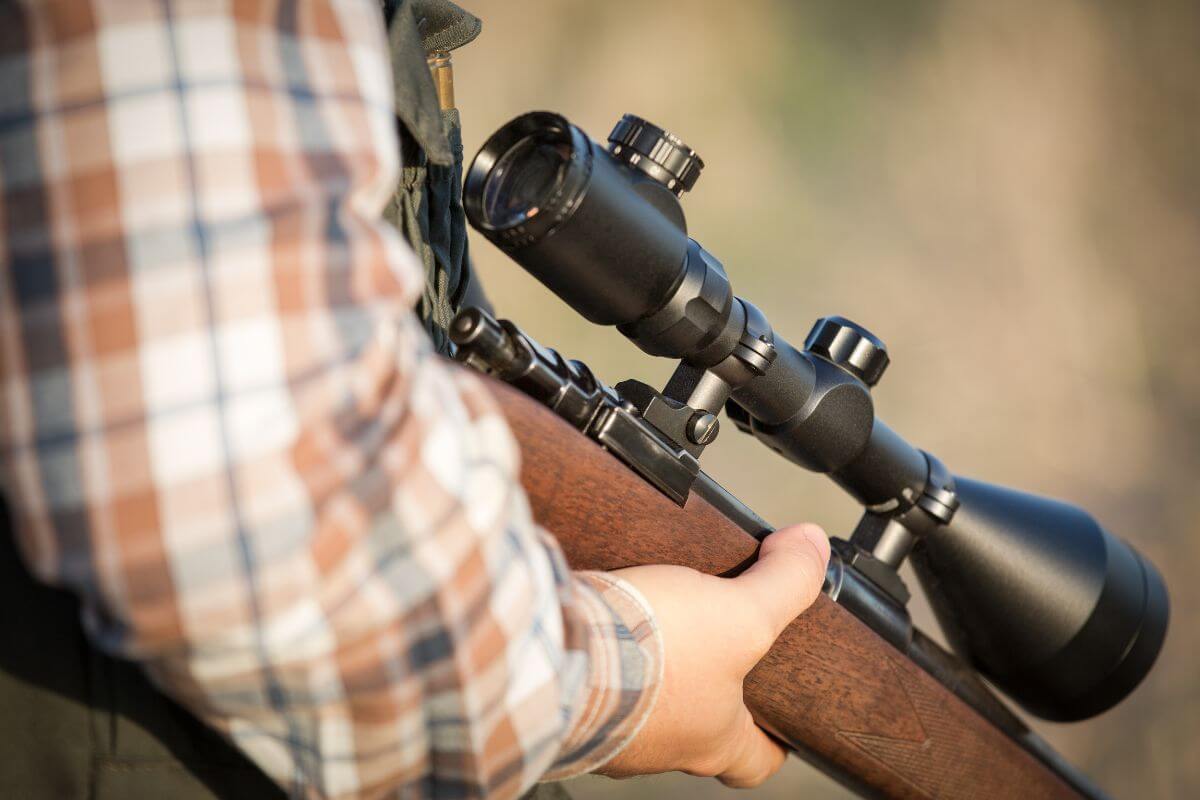
When you’re out on a Montana wilderness hunt, there are additional golden rules to live by, and they’re not just for your protection but for the preservation of this natural bounty. Here are some more tips to keep in mind as you step into the paradise of hunting fields and forests:
- Practice Safe Hunting – Let’s state the obvious – safety first. Know what you’re targeting, think before you shoot, and take your time. Your goal isn’t just to make the best shot, but the safest one too.
- Transport and Store Firearms Safely – Unload your firearm before you ever set foot in or on a vehicle and always keep it in a certified case.
- Reiterate Safety Against Impairment – In hunting, there’s no room for impaired judgment. Don’t touch a drop of alcohol or use drugs during your hunting trip.
- Respect for the Wilderness and Its Inhabitants – What separates ethical hunters from others is reverence. Adhere to Leave No Trace, stay mindful of your trash, and don’t disturb or overhunt an area.
- Respect Fellow Hunter – Everyone’s here to partake in this natural symphony. Respect others’ chance in the limelight too.
- Adapt to Weather Conditions – The weather is a shapeshifter in Montana, particularly in the mountains. Pack layers, always have a survival kit, and keep an eye out for weather updates.
- Embrace The Unexpected – Bring a portable shelter and a GPS. You never know when you might need to hunker down or find your way back.
The final pointer: let passion and patience guide you. Hunting, after all, isn’t just another tick on a bucket list. The quest itself for that perfect moment, that perfect shot, often becomes the newest item on your bucket list.
Post-hunt To-Do List
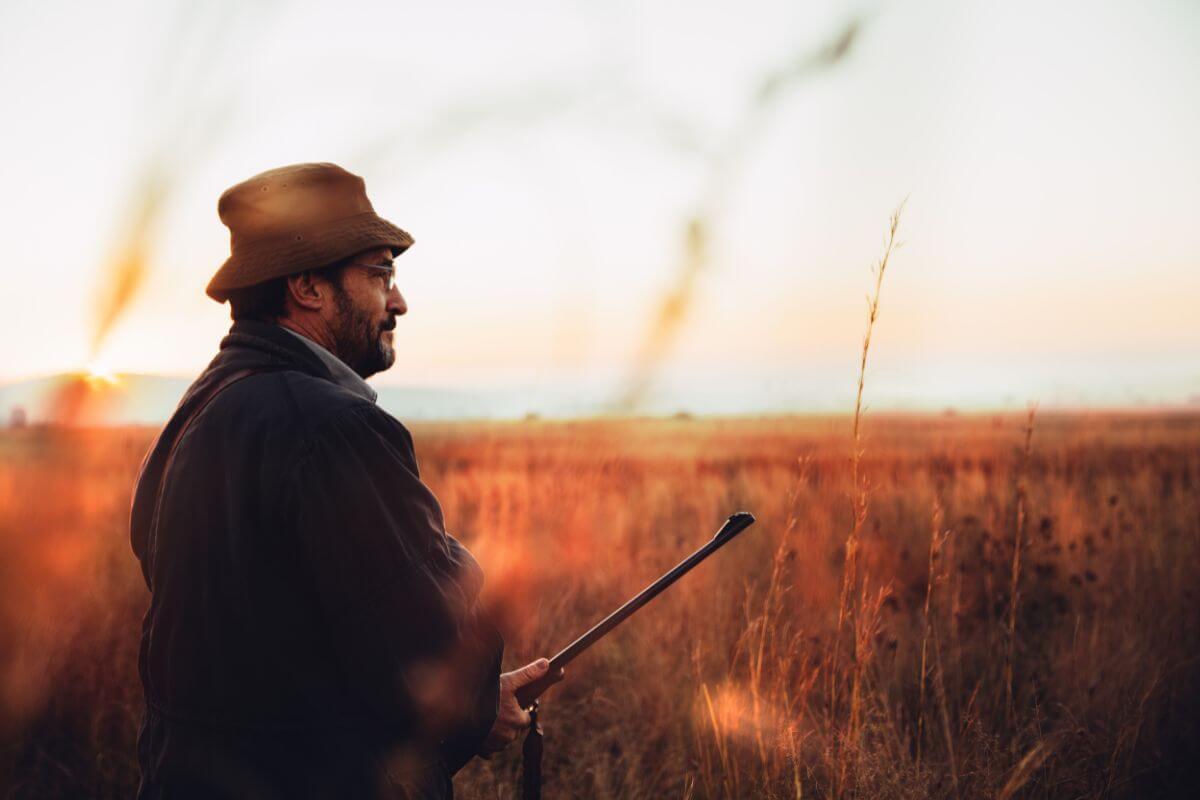
When the thrill of the chase has come to an end, it’s not time to pack up and leave just yet. Your Montana adventure has other chapters to explore. Let me guide you through some essential post-hunt to-do’s to make the most of your awesome experience in the Big Sky Country.
1. Field Dressing and Processing
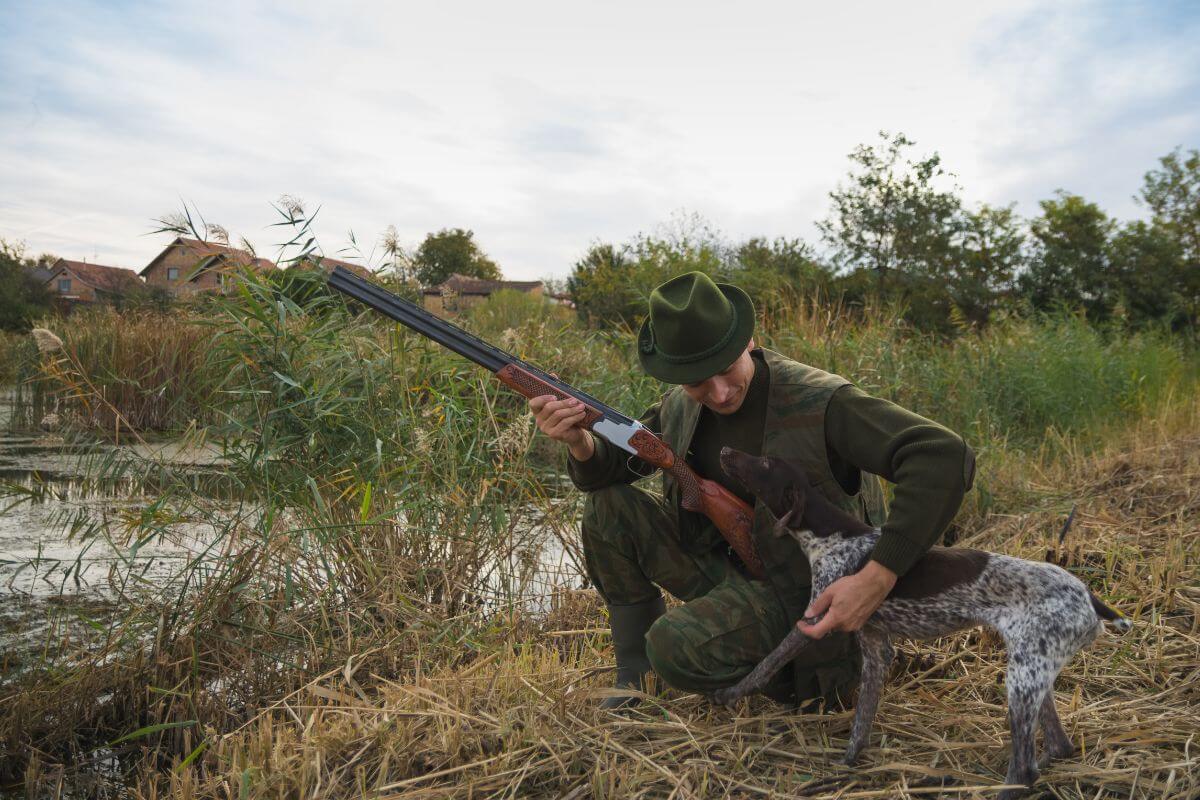
Once you’ve successfully bagged your game, the responsibility shifts to ensuring proper care for the animal. Here’s how you make sure the harvest is treated right and safe to savor:
- Field Dressing – Whether in the field or back at camp, do it soon. This means removing the internal organs from the body cavity, which is crucial for preserving meat quality and preventing spoilage.
- Tools of the Trade – Donning plastic gloves and wielding a sharp knife are essentials in the game cleaning toolkit.
- Tidying Up – For the feathered game, leaving feathers and entrails littered around is a no-no. It’s about respect for the animal and minimizing your impact on the environment.
- Proper Cooling and Aging – This isn’t just about quality; it’s also about food safety. Rapidly cooling the meat soon after field dressing and then letting it age for a defined period ensures the best flavor and texture.
- Transporting the Game – To keep your harvested meat fresh during the trip home, pack it in plastic bags in an ice chest. It’s the icing on the (metaphorical and literal) cake, ensuring meat stays cool and dry.
You might call this the “after-hunt ritual,” and it’s an all-important step in the hunting journey. Just as a chef wouldn’t leave the ingredients to spoil after meticulously selecting them, you shouldn’t let your hunt go to waste after all your hard work.
2. Checking Game
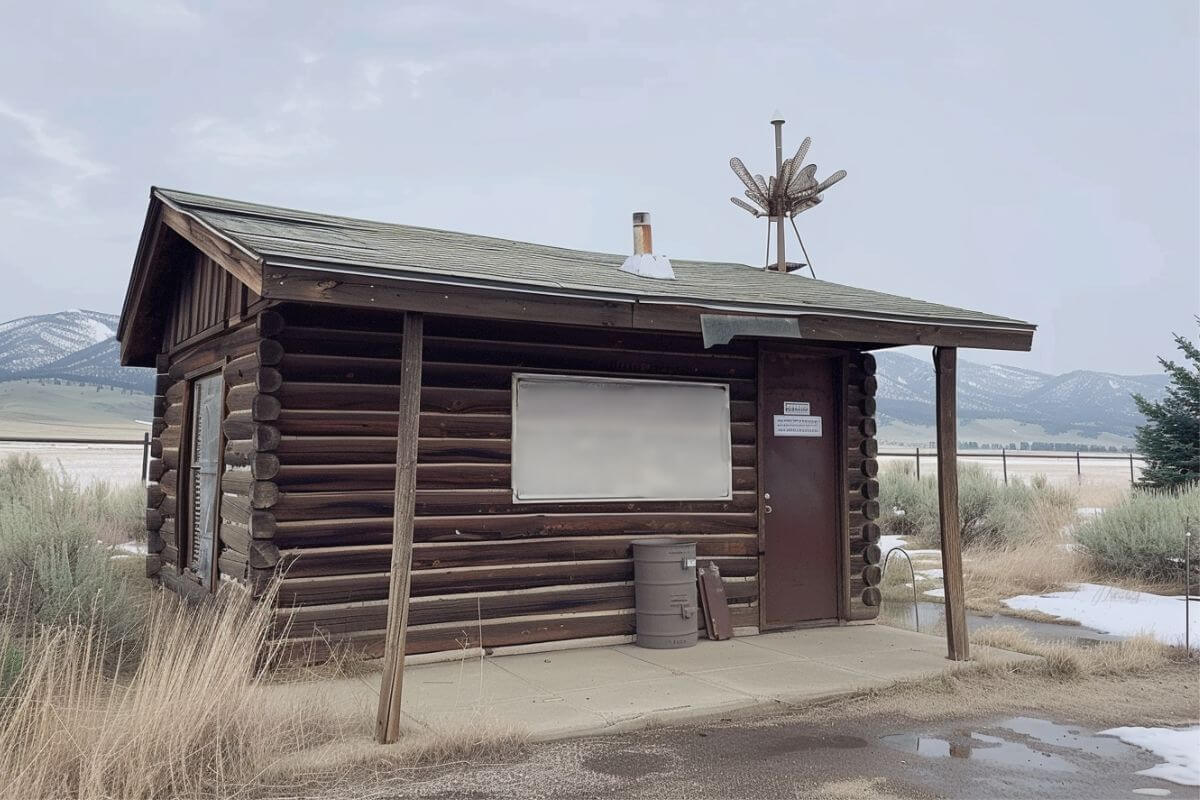
Montana Fish, Wildlife & Parks (FWP), the real MVP of wildlife management, has an important reminder for us intrepid hunters. According to state law, when you’re hunting in the Big Sky Country, you’ve got to do a little pit stop dance at the game check stations.
Here’s the lowdown: Even if your hunting expedition didn’t end with a victorious drag-back to the truck, you’re still required to swing your Land Rover or your old faithful pickup truck into the check station – which might I add, is not always the easiest thing when you’re towing your hunting gear. But hey, rules are rules, and not stopping can lead to an unpleasant face-off with a fine.
Now, I know what you’re thinking: “What’s in it for me besides a ticking-off from Uniformed Folks?” Turns out, quite a bit. When you roll onto the gravel at a game check station, it’s not just self-evaluation time. This is where FWP staff will gather effective details about your potential harvest — health, sex, age, and location harvested.
Besides providing valuable information for the management of Montana’s plentiful deer, elk, and other game species, the stats gathered at these game checks are a bit like a crystal ball for future hunting opportunities. You see, biologists and wildlife managers use this intel to estimate population sizes, update hunting quotas, and ensure sustainable harvest levels.
So in a way, stopping at these check stations isn’t just a legal chorus line, it’s a boon for the future of hunting in Montana.
3. Cleaning and Storing Gear

Congratulations, you’ve had an epic hunting season, but now you’re back home with a treasure trove of memories and some mighty equipment that needs TLC. The cleaning and storing process may seem tedious, but trust me, it’s the unsung hero of ensuring a smooth, hassle-free hunting experience next time you’re out there in Montana’s wild expanse.
Key Steps to Clean and Store Your Hunting Gear:
- The Cleanup – After your hunt, make sure your outerwear is free of dirt to prevent damage to the fabric over time. For clothing, a regular, gentle machine wash with appropriate detergents is sufficient, but always ensure everything is completely dry before storing, as moisture can damage hunting gear.
- Footwear – If you’re tracking game, your footwear must be given considerable attention. Clean off mud, apply a waterproofer if needed, and store them in a dry place, away from direct sunlight. Store footwear in a well-ventilated space to prevent mold and mildew.
- Rifle and Firearms – Show some love to your firearms by cleaning and oiling them regularly, checking for dirt, and rust, and inspecting the bore with a good gun-cleaning kit. For added safety, store firearms in a secure, locked location, using trigger locks, especially if there are kids around.
- Essential Maintenance – Regularly inspect all your gear, scheduling a ‘gear check’ every few months, especially during seasonal changes. For optics, ensure they’re free from damage or fogging, allowing you to enjoy the spectacular views in the hunting ground without hindrance.
Like a well-prepped and seasoned chef, a hunter performs best when the gear is in top shape. Not only does cleaning and storing extend the life of your beloved equipment, but it’s also like setting up your welcome home party for next the hunting season — a testament to proper care, respect, and love for the great outdoors. Besides, who doesn’t love turning up to the party looking and feeling their best, right?
A good huntsman is always mindful of his tools. Give your hunting gear a thorough cleaning and check for any damage. Maintaining your equipment ensures you’re always ready for the next adventure.
4. Celebration
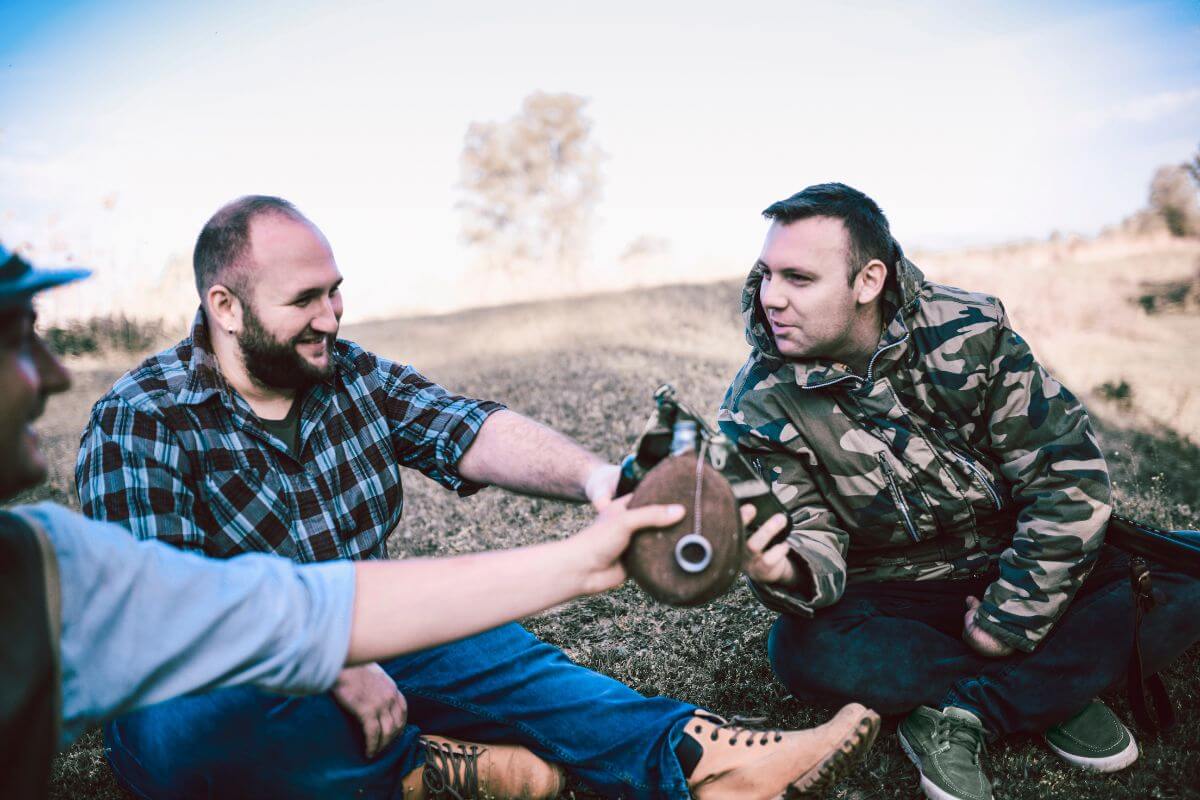
The quiet thrill of waiting, the heart-pounding release of the perfect shot — hunting in Montana is nothing short of magical. But let’s talk about the jubilant festivities that unravel after the hunt; because trust me, these are scenes that deserve to be etched into your memory.
Here are ways to celebrate your successful hunt:
- Reflect on the Experience – Your eyes have been keen, your senses sharp, and your patience unwavering. Now, as the adrenaline mellows, take a few moments to reflect on your hunt. What did you learn, not just about hunting but about yourself? Write down your thoughts in a journal or simply meditate on your experience. The mental harvest can be as rich as the physical one.
- Share Stories Over a Meal – They say the joy of living is in the joy of sharing. While your catch might not guarantee a feast, it does make for countless tales. Share your stories around a campfire or local diner. Perhaps you’ll uncover a traditional recipe to cook your game in a way you never thought possible.
- Capture the Memories – Don’t just keep the adventure confined to your memory. Modern Montana hunters are all into capturing their hunting stories through photography. Whether it’s a dramatic shot of the landscapes or a proud pose with the game, these photos are the treasure box that you’ll crowd around during future hunts.
Celebrating a successful hunt isn’t just about the kill; it’s about savoring the rich narrative that accompanies it. Just like in life, it’s the shared experiences and memories that make these moments all the more awesome, and they’re exactly what you’ll cherish long into the future.
Montana Hunting Guide Final Thoughts
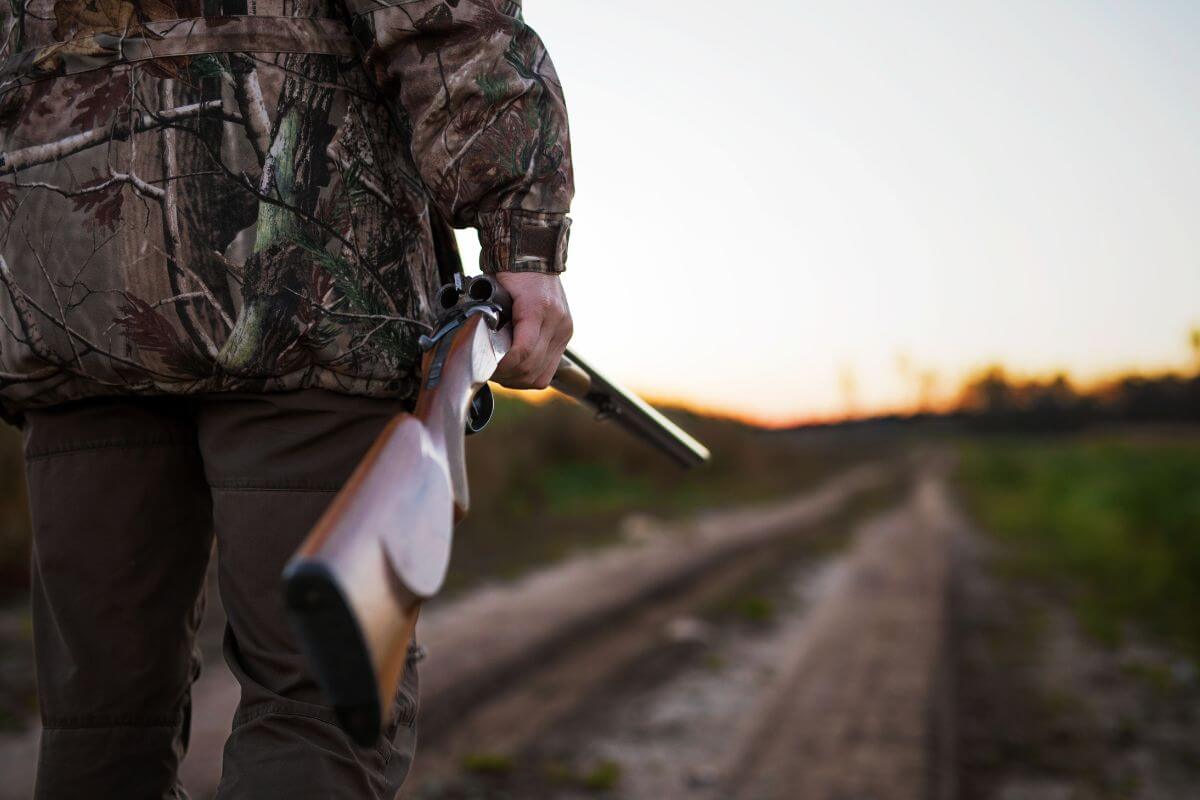
Montana is not just a state; it’s an open invitation for adventure, especially for keen hunters. From breathtaking landscapes to diverse game species, Montana offers the quintessential hunting experience — but only if you’re properly prepared.
By studying hunting regulations and acquiring the right gear, you’re positioning yourself for a successful and respectful hunt. What sets a Montana hunting trip apart is the blend of physical preparedness, gear selection, and respect for local regulations and wildlife.
The local outfitters are also there not just to make your trip easier, but also making your Montana experience more special with expert guidance. Whether you’re a novice or a seasoned hunter, a thoughtful and educated approach makes all the difference.
So, gear up, study up, and get ready to unlock the unfiltered beauty of Montana’s wild side.
Montana Hunting Guide FAQs
1. What Is the Best Thing to Hunt in Montana?
Montana offers diverse hunting opportunities, but one of the most sought-after and iconic game species is the elk. Known for its challenging hunt and majestic presence, Montana’s elk population attracts hunters from around the world.
2. Can Foreigners Hunt in Montana?
Foreigners can hunt in Montana but must adhere to the state’s hunting regulations and licensing requirements.
3. Is Montana a Good State for Hunting?
Montana is widely considered an excellent state for hunting due to its diverse landscapes, abundant wildlife, and various game species. The state offers premier opportunities for big game hunting, including elk, mule deer, white-tailed deer, antelope, and more.
4. What Can Non-Residents Hunt in Montana?
Nonresident hunters in Montana have the opportunity to hunt a variety of game species, including elk, mule deer, white-tailed deer, antelope, black bear, mountain lion, and upland birds.
However, specific regulations, licensing requirements, and quotas apply, and non-resident hunters are advised to carefully review the Montana Fish, Wildlife & Parks guidelines to ensure compliance with the state’s hunting regulations.
5. How Long Do You Have to Live in Montana to Hunt?
Montana requires hunters to be residents for at least 180 consecutive days immediately preceding the date of application to be eligible for resident hunting licenses and permits.
Dive deeper into the wonders of Montana with these captivating articles below:
- Montana Best Attractions
- Montana Gems
- Popular Outdoor Activities in Montana
- Road Trips to Montana
- Montana Tours
- https://fwp.mt.gov/hunt
- https://www.montana.edu/news/561/etiquette-on-private-land-helps-assure-future-hunting
- https://tpwd.texas.gov/education/hunter-education/online-course/hunting-skills-1/field-care
- https://tpwd.texas.gov/education/hunter-education/online-course/hunting-skills-1/strategies
- https://fwp.mt.gov/binaries/content/assets/fwp/montana-outdoors/2009/checkstations.pdf

